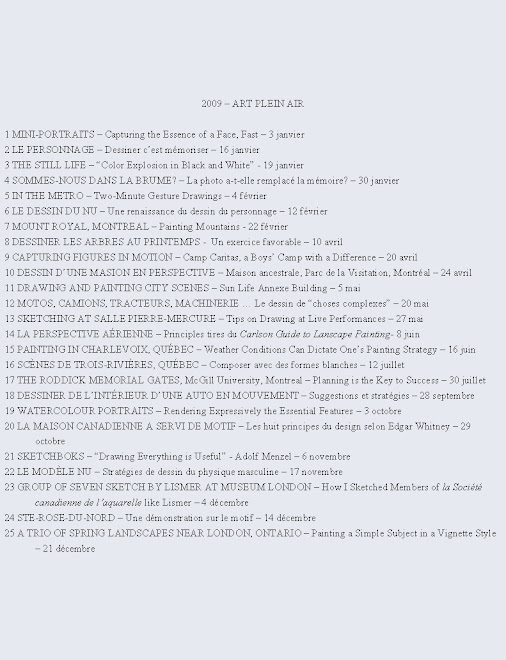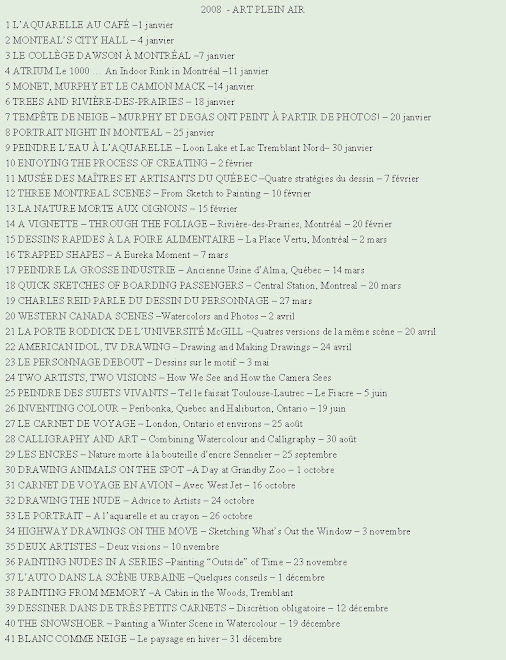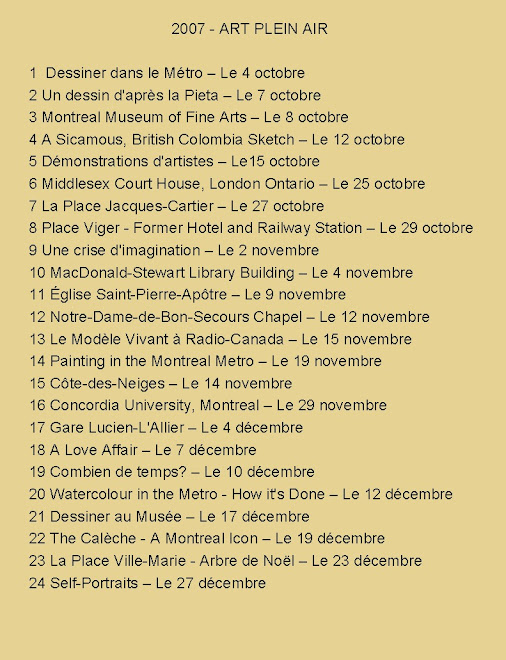Look at these five watercolors carefully. Have you noticed how many white shapes were left unpainted? I believe that is what makes them look bright and joyful. Both Making Color Sing by Jeanne Dobie and Charles Reid’s Watercolor Secrets are must read books equally for the beginner and for the advanced watercolorist. Dobie talks about the importance of whites while Reid explains how painting in watercolor in ordinary sketchbooks helped improve many facets of his art.
“Your whites should be like pearls, containing many beautiful colors and yet remaining white.”
“Keying your whites can make the difference between a watercolor with an ordinary light-dark contrast and a watercolor that develops a glowing contrast.”
“When I ask students, ‘What is the strongest element in a painting?’ the usual responses are: spontaneity, technical control, a strong dark design. While these are desirable qualities, my students seldom think of the simplest element of all – leaving the white paper white.”
“If the viewer’s eye is drawn first to the light areas of a painting, shouldn’t the artist develop the white shapes into something distinctive?
“…For the untouched white paper to be the strongest elements in a painting, I stress the idea of working with unpainted shapes from the beginning.”
Charles Reid in Watercolor Secrets has this to say
Sketchbooks taught me about the importance of time (actually the lack of it) needed to make a good drawing or painting while working on the spot. I learned that I didn’t have time for sketching with searching lines; I needed a single, carefully considered contour line to capture my subject or scene. Slowly my drawing improved. I started painting in sketchbooks in the late 1970’s, suing the same light drawing paper, and found that I couldn’t correct or use overwashes on fragile sketchbook paper.
This changed my approach to all of my watercolor painting. Even when I paint with heavier watercolor paper, I strive for the correct tonal-value with my first try. I don’t always manage a finish with my fist try but it’s always my goal.
Strive for the correct tonal value from the start
I painted this series of watercolors on Strathmore Aquarius II 80 lb. paper. This paper is soft and does not accept corrections well, if at all. Paradoxically that is one reason why I like the paper. I strive for the correct value from the start like Charles Reid and never think of “correcting”. For me, a painting either works or it doesn’t. It is only a sheet of paper and modifying the original washes makes the watercolor loose its freshness. I prefer starting over. Also, like Charles Reid, I sometimes paint in ordinary fragile paper sketchbooks. As a matter of fact, some of the watercolors painted by Yvon Masse and myself which were reproduced in our latest book “Carnets du Vieux-Montréal” were painted on ordinary paper, not on watercolor paper.
Raynald Murphy sca














Aucun commentaire:
Enregistrer un commentaire